I’m not sure if I’d ever bought margarine or canned minced clams before this month. And fruit cocktail from a can? That hadn’t made its way into my house in two decades.
But there I was, standing in my kitchen using ingredients from another era in recipes that came – quite literally – out of a culinary time capsule. I had spent hours flipping through hundreds of recipe cards jammed into two small boxes, wondering whose looping handwriting covered these index cards and which recipes her family liked the most.
My culinary trip back to the 1960s, when margarine and gelatin were as plentiful as hummus and Sriracha are today, came courtesy of an impulse buy at a yard sale.
I came across the recipe boxes at a yard sale at the end of a winding dirt driveway, tucked on a shelf in a garage crammed full of the remnants of an antiques business. The boxes themselves weren’t that interesting – Army green with rusty scratches and a few random pieces of tape – but I was intrigued when I peeked inside.
Both were packed full of recipes, the slightly yellowed cards alphabetized in one box and sorted by type in the other. Most of the recipes were written in the same tidy cursive script. My heart tugged the same way it does when I come across boxes of old family photos at flea markets. Aren’t these treasures that some family wants? How did they end up here?
These boxes, I thought, belong to someone’s grandmother.
I couldn’t leave them behind, so I forked over 50 cents and brought them home. I mentioned them once to a colleague, talked about cooking some of the recipes, then tucked the boxes away in the corner of my kitchen for longer than I care to admit. (OK, it was probably two years, and I occasionally looked at them guiltily as I dusted their unopened tops.) But then that colleague – our food editor, who is always on the hunt for a good story – asked me if I’d ever followed through with my plan to try some of the recipes.
Now seemed as good a time as any to start.

Some of the old recipe cards and the box that they came in when Graham found them at a yard sale about two years ago. Graham believes the woman who made these cards lived in the area because they contain a number of classic New England recipes.
SOMEONE’S GRANDMA
My initial thought of “someone’s grandma” reverberated every time I flipped through the cards, wondering why someone would top gelatin salad with cottage cheese or which of the three recipes for molasses cookies was the best. It made me think of my own grandmothers.
Jane, my father’s mother, explored the history of the family farm in Vermont through the soul of the farmhouse – the kitchen – in a cookbook she wrote and self-published. She taught me and my sister how to make strawberry jam while telling us stories of doing the same with her own grandmother. She had my favorite beef stew simmering on the stove every time I arrived to stay during school vacation. In her later years, she would carefully write out recipes she found online and wanted to try.
Nelva, my maternal grandmother, died when I was barely old enough to remember her. But somehow her love of reading cookbooks passed along naturally to me and my brother, and we often hear stories of the fancy dishes she made and the recipes she created. We still make her plum pudding at Christmas and her baked beans on snowy weekends.
I’m lucky to know my family’s food history, to taste the same recipes at holiday meals and be able to look at my grandmothers’ handwriting in notes in the margins of their cookbooks.
It was fascinating to look through a collection of recipes so unlike the ones my family uses. There were recipes for blueberry pudding, pistachio cake, double-boiler pudding, date rolls, chop suey and a disturbingly large section of gelatin salads. A recipe for tutti-frutti cake came just before one for last-minute fruit cake. Savory recipes, of which there are few, include Superior Crab Louis, hamburg-vegetable salad and German-style red cabbage.
Then there were the recipes from another era: pineapple cream cheese pie, molded salad, tomato soup cake and a recipe dated 1958 for “Glorified Minute Rice,” a concoction that includes pineapples, cherries and marshmallows. Fruit cocktail was a popular ingredient, showing up in cookies, cakes and gelatin molds.
Reading the recipes became a bit of an obsession. I kept the boxes on my desk during the day, where I’d flip through the cards, scouring each one for clues. I noted the cards written in different handwriting or credited to a specific cook. I pulled out each recipe clipped from a newspaper or magazine, searching for dates and places. At night, I’d move the boxes to the coffee table and debate which recipes to try first.

Gillian Graham cuts a piece of Nettie’s Chocolate Cake. The dessert was made from ingredients Graham already had in her pantry.
The boxes gave up a few clues: Tucked in the cake section was a Cooking Down East column by Marjorie Standish clipped from the July 14, 1968, Maine Sunday Telegram. The recipe included with the column was Maine Blueberry Dumplings (I’m adding that to my To-Bake list for the next blueberry season). A June 1968 pullout from Better Homes & Gardens featured pork chops and peach ice cream.
A vision of the woman behind the boxes began to form in my mind. She was a Mainer and a baker, a frugal woman who used pantry staples to whip up treats for family dinners and church fairs. I imagined her in the kitchen of an old New England farmhouse, the room warm and cozy in the winter as she made a roast and baked a cake for Sunday dinner.
PYREX FOR EVERY OCCASION
A romanticized version of this grandmother fully in mind, I headed to the kitchen.
I’d like to say I chose to cook the “Boston Casserole” first because I was intrigued by the recipe itself. Instead, I’ll confess to choosing it because I had the perfect casserole dish for it in my vintage Pyrex collection. My green Heinz dish – originally 79 cents with the purchase of three canned Heinz products back in 1953 – begged to be used for this casserole, which is nothing more elaborate than a mix of mini hot dogs and baked beans topped with brown sugar and baked until the sugar melts. A note at the bottom of the recipe card suggests serving it with a side of Boston brown bread (you know, that stuff in a can) and that any pork product could be substituted for the frankfurters.
The casserole, while far too sweet for my taste, reminded me of my childhood. Add a side of coleslaw and I would have felt like I was at a bean supper in the basement of my childhood church.
Next up were Fruit Cocktail Cookies, which I couldn’t resist trying. But before I could crack open the can of fruit cocktail with waxy cherries, I had to consult my editor for help deciphering the recipe. Spry, she told me, was a popular brand of shortening. Another word appeared at first to be illegible, but I was able to figure out it read “soda+”, meaning baking soda plus the cream of tartar listed on the line below it. My editor mentioned the amount of baking soda seemed like a lot, and she was right. The first batch tasted like baking soda, so I adjusted the recipe (printed here with my changes) to cut the baking soda and cream of tartar in half. As with many of the recipes in the boxes, I was left guessing about the precise measurement or, more often, the instructions for making the dish.
The verdict on those fruit cocktail cookies? They were OK. They weren’t very sweet, but they also weren’t very memorable. It was a fun recipe to try, but I doubt I’ll make them regularly.

Gillian Graham declared clam casserole a keeper.
A recipe for potato candy, similar to a Needham, was a disaster, but the Clam Casserole was a pleasant surprise. As I prepared to make it, a friend told me it reminded her of an oyster casserole her aunt used to make her uncle as a special treat. The ingredients are basic, but the resulting casserole is a surprisingly flavorful stuffing that I’d make again, but with butter instead of margarine.
When it was time to make a birthday cake for my father-in-law, I turned to the recipe boxes for help. Nettie’s Chocolate Cake, made entirely of ingredients I already had in my pantry, was perfect. I consulted my own grandmother’s cookbook about the sour milk it called for (on the farm, my grandmother wrote, they added 1 teaspoon of white vinegar to milk or cream to make it sour). The cake was moist and chocolatey, but not overly sweet. It paired well with the brown sugar-coconut frosting recipe I found in the same section of the box.
After those successes, I decided to be a little daring and try one of the more interesting vintage recipes. I went with French’s Sandwiches and saved the peanut butter and pimento cheese pinwheel sandwiches (yes, really) for another day. The French’s Sandwiches recipe is simple, I thought, and might be good. Why else would someone make a sauce of evaporated milk, mustard and ketchup and pour it over a perfectly good grilled cheese?
I won’t mince words: it was not good. My husband, while trying not to gag, told me it was the “most horrible thing” I’ve ever cooked. (He then nicknamed it “vomit sauce,” ensuring I’ll never be able to think of it as anything else and definitely won’t make it again.)
After telling a friend about all the recipes I’d tried, she asked what I would do with the recipe boxes now. In my dreams, someone will recognize the handwriting and recipes from this story I’m writing and I’ll reunite the boxes with someone’s grandma’s family. If that doesn’t happen, I’ll tuck them back on the shelf in the kitchen and, when the urge to bake comes on, I’ll try another recipe.
As long as it doesn’t involve margarine.
Send questions/comments to the editors.


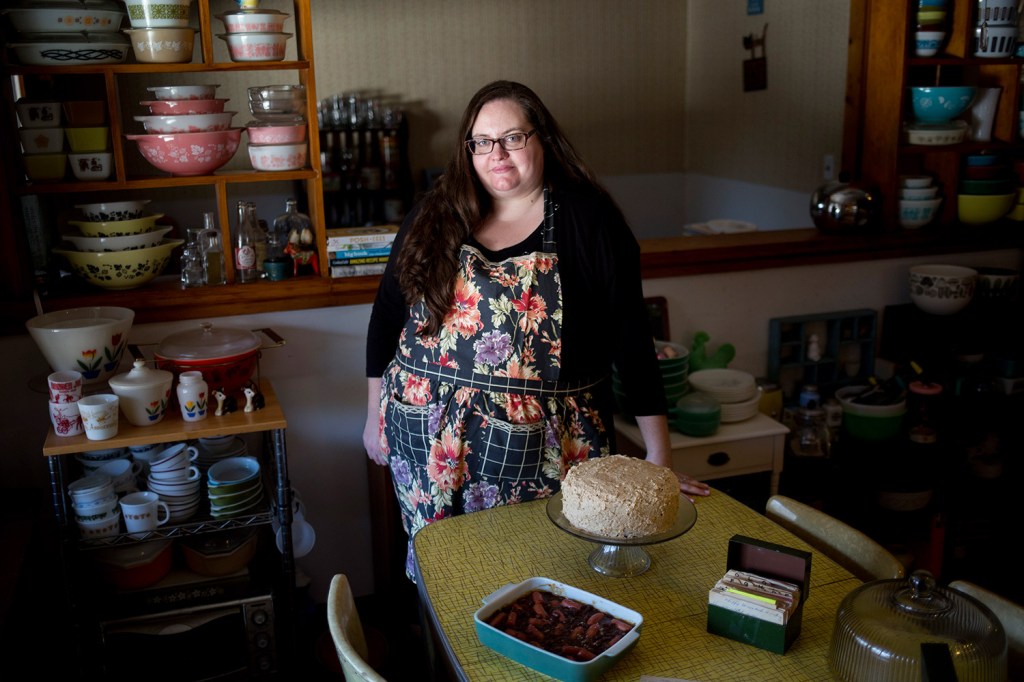
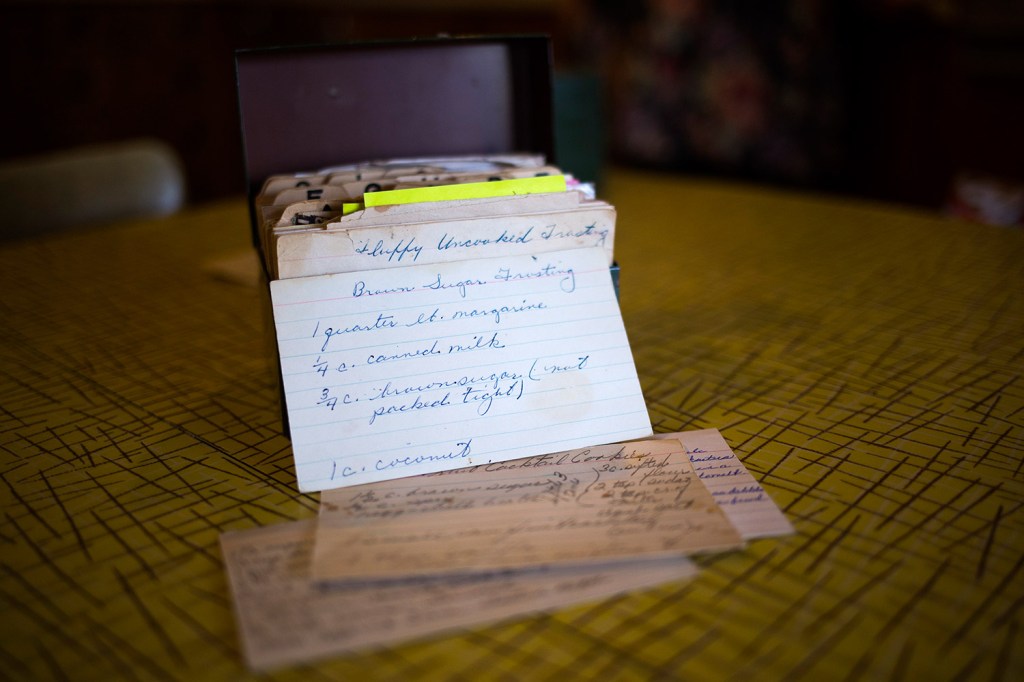
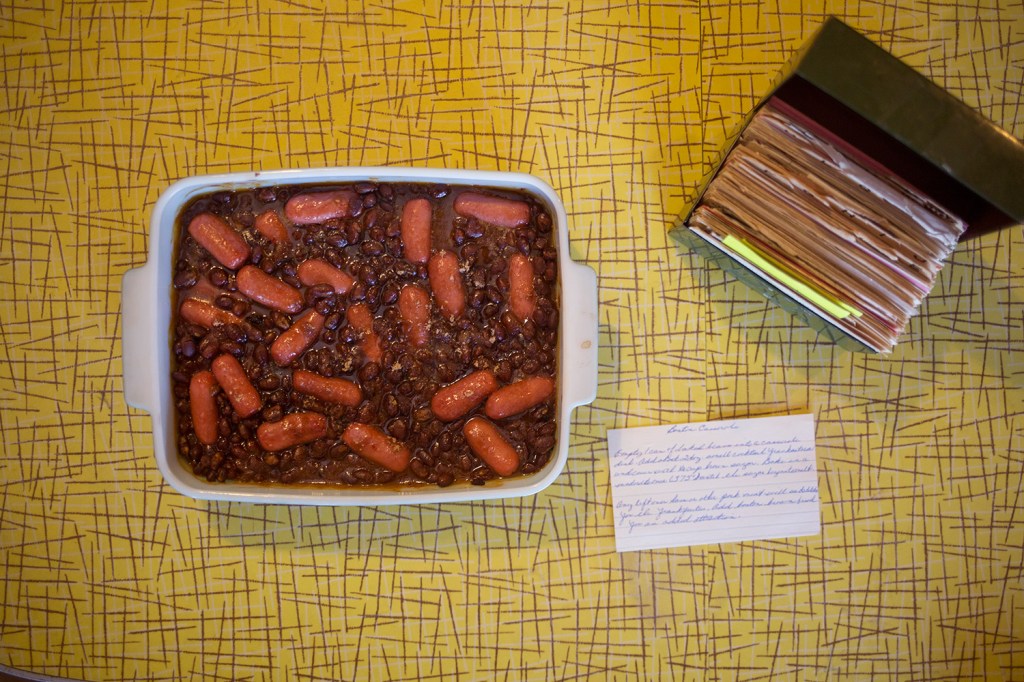
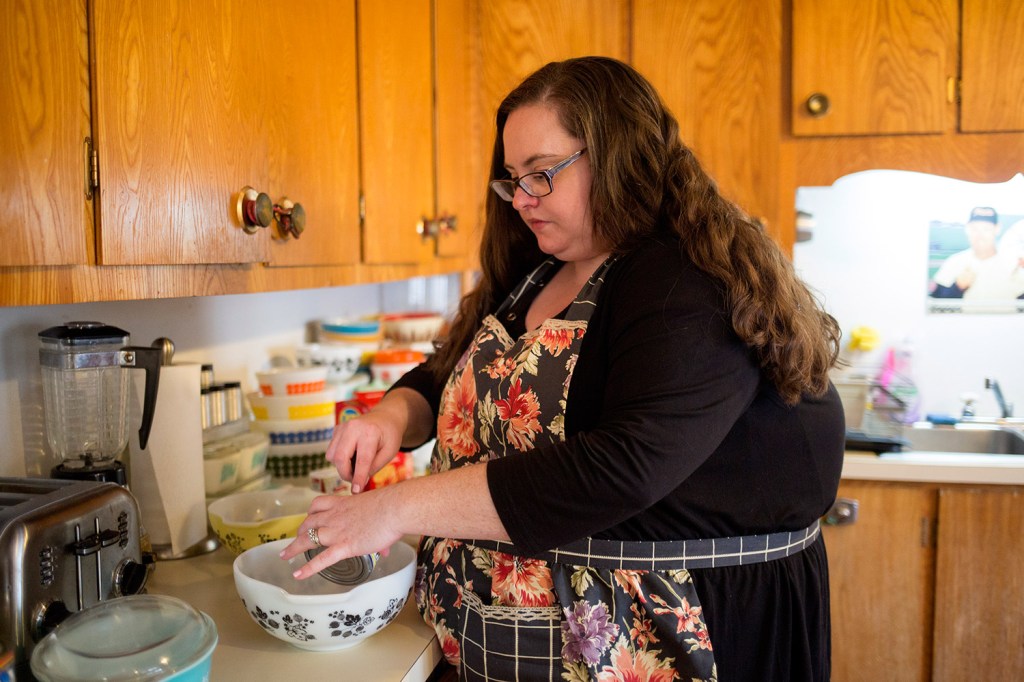
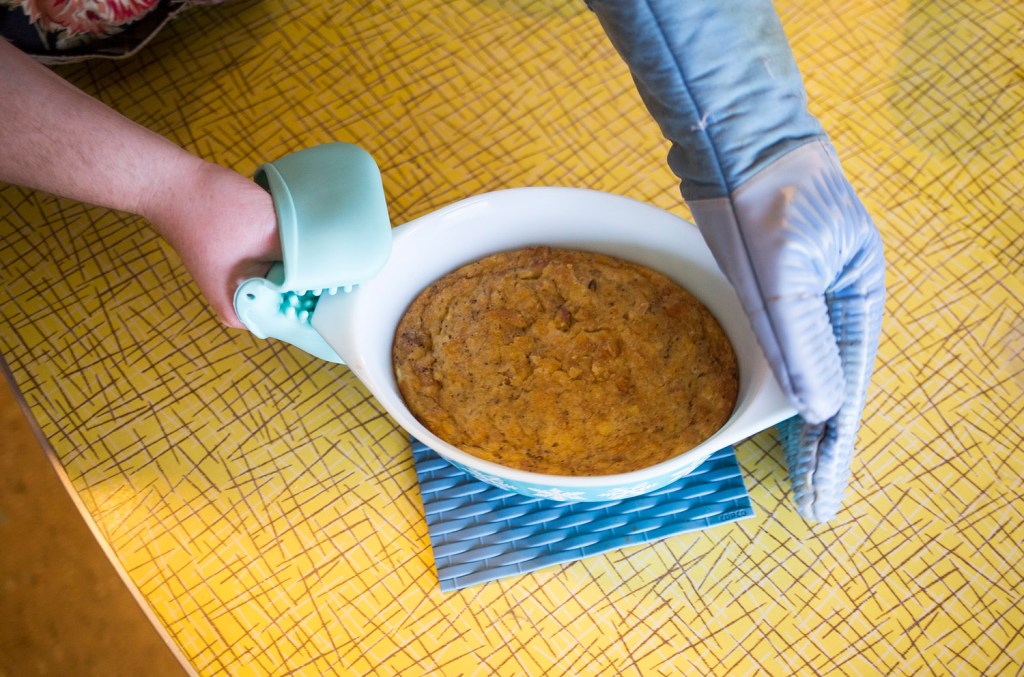
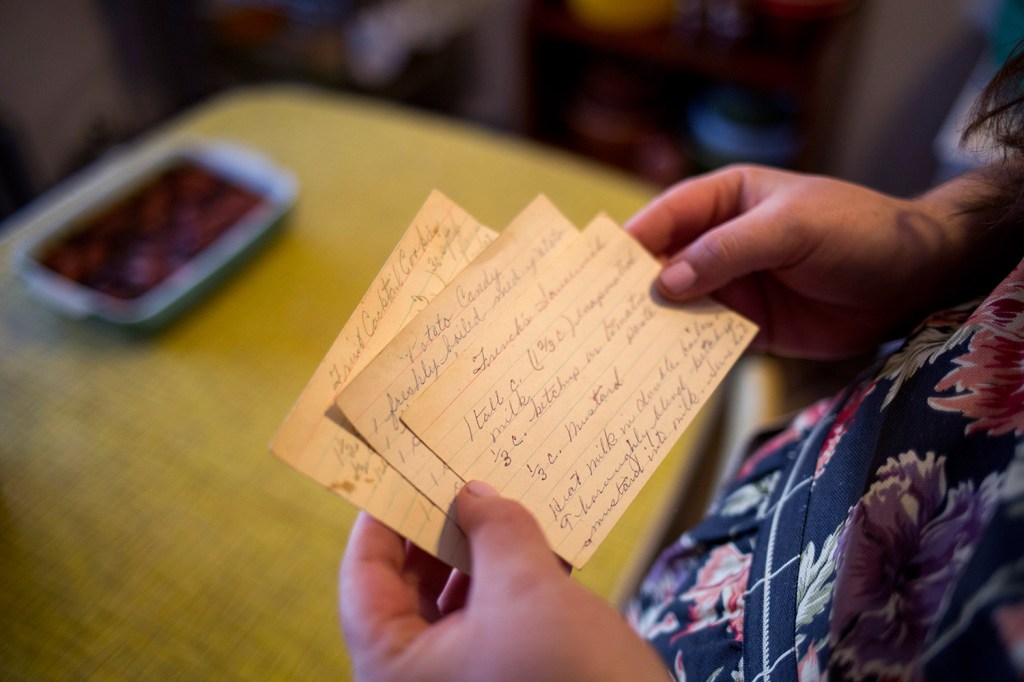
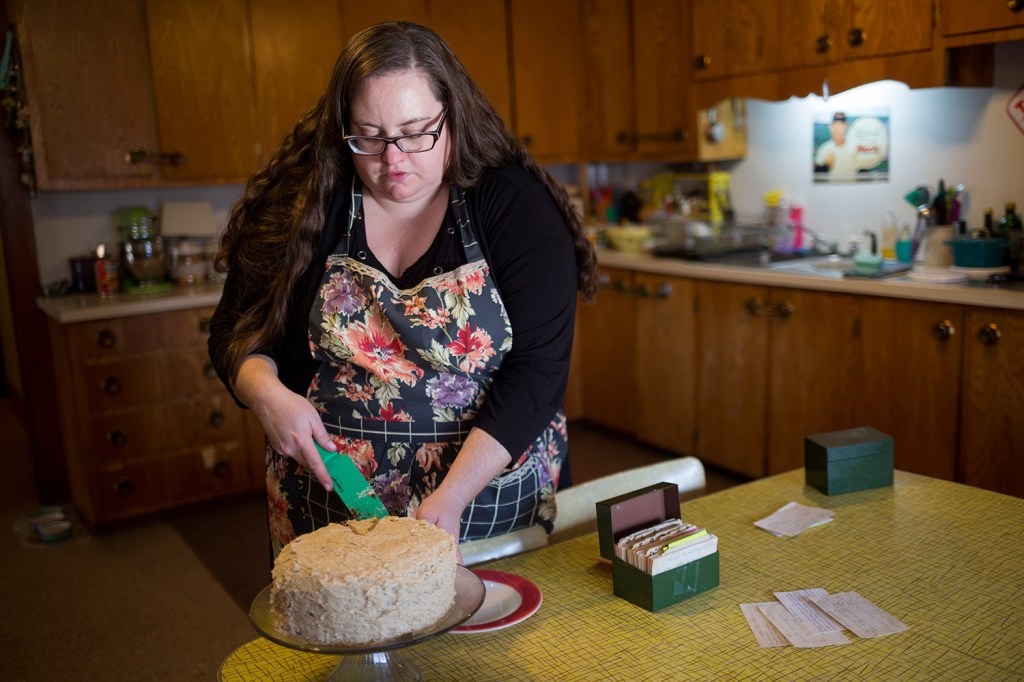
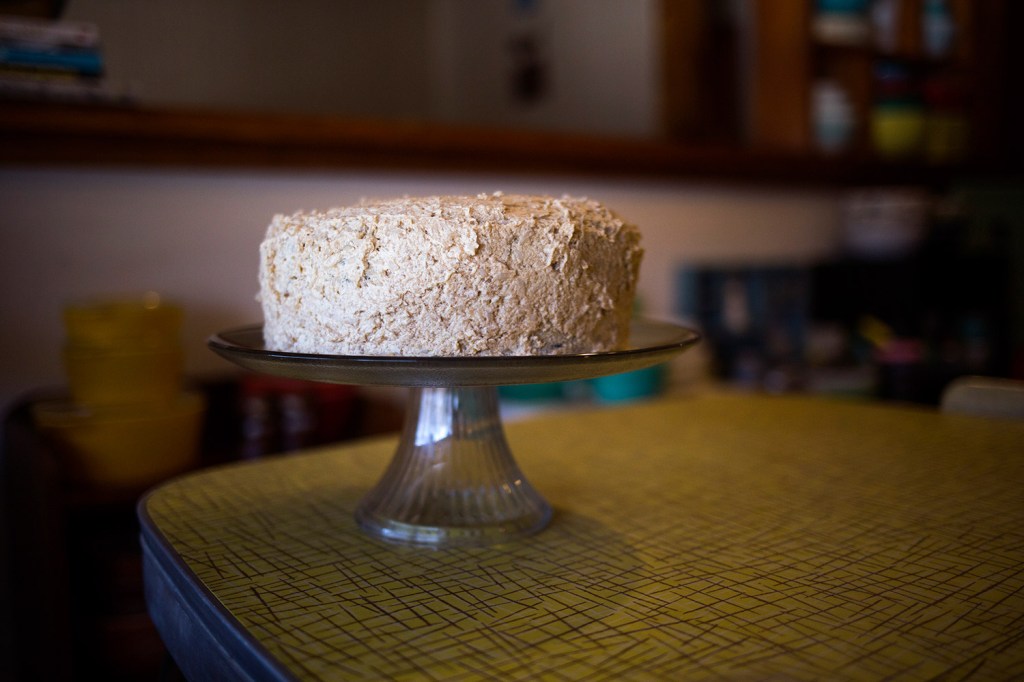

Success. Please wait for the page to reload. If the page does not reload within 5 seconds, please refresh the page.
Enter your email and password to access comments.
Hi, to comment on stories you must . This profile is in addition to your subscription and website login.
Already have a commenting profile? .
Invalid username/password.
Please check your email to confirm and complete your registration.
Only subscribers are eligible to post comments. Please subscribe or login first for digital access. Here’s why.
Use the form below to reset your password. When you've submitted your account email, we will send an email with a reset code.